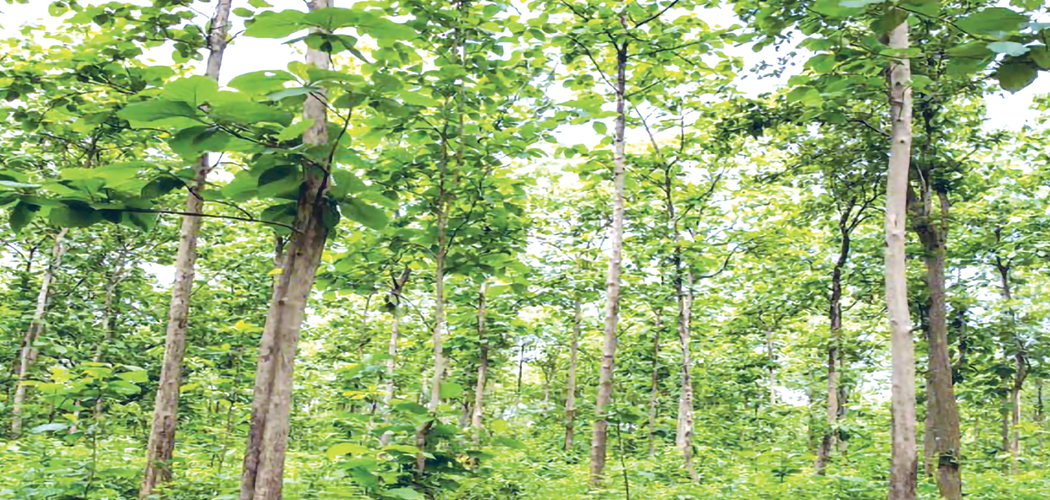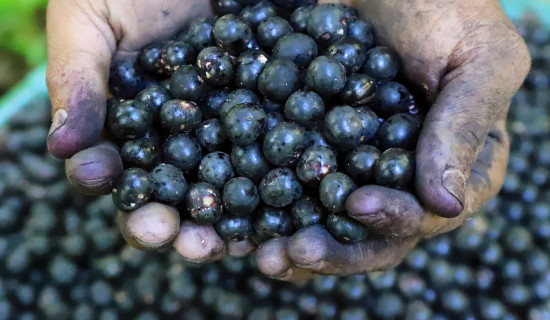- Sunday, 10 August 2025
Preservation Of Natural Resources
Dixya Poudel
weather is climate change. It has resulted in natural disasters, which have been occurring frequently on a devastating scale throughout the world.
Natural resources such as land, water and forests are consequently and adversely depleted due to heedless human activities. Despite depending upon the natural resources for livelihood and sustenance, organisations, institutions, governments and even individuals tend to be lax when it comes to the preservation of such resources.
While natural resources are services and goods provided to us via the environment, human-made resources are made by humans through their diverse and innovative skills, experiences, knowledge and enterprises. Thus, human-made resources include buildings, cities and institutions along with artefacts. Meanwhile, the earth's natural resources are divided into two kinds: renewable resources and non-renewable resources.
Water, forests, wildlife, aquatic life, and pastures are called renewable resources because they can be recycled. In contrast, non-renewable resources are fossil fuels and minerals that get lost once they are used and therefore cannot be regenerated.
We are well aware that fossil fuels such as coal and petrol cannot be recovered once they are burnt as fuels for transportation and industrialization. Further, they take millions of years to form. Mineral deposits too take millions of years to form and thus are non-renewable. The formation of soil is counted as non-renewable since it takes thousands of years to form a layer of topsoil.
Renewable Sources
One of the important renewable natural resources is forests. The word forest is derived from the Latin word 'foris' meaning outside. It is a reference to the boundaries of the ancient villages that could have included uninhabited and uncultivated land.
And according to the altitude and climate, there are different types of forests. The colder regions see coniferous trees while the temperate regions are rich in deciduous trees and the hotter regions see a proliferation of tropical plants and trees. Forests are a refuge for wildlife and people throughout time have benefitted through the resources found in forests.
People have been felling trees for firewood and timber throughout history. Further, forests are a great source of essential oils, pulp and paper, medicinal plants, resins, turpentine and tasser silk. They provide food, habitat and protection to diverse wildlife ensuring unique biodiversity. They add to local precipitation while also enhancing the water holding capacity of soil and checking soil erosion. Further natural disasters such as drought and floods are reined in by the ecosystem of the forest. Thus, protecting and preserving forests is of paramount importance.
Humans however have encroached upon the wildlife through deforestation for the extension of habitable lands. Forests are also cleared for agricultural lands, extractions of timber and mining of minerals. Pest attacks and grazing of animals also lead to the destruction of the trees. Forest fires are additional causes of deforestation and a cause for alarm. They occur either naturally or through human activities. Organic matters form a thick layer on the forest floors which are an ideal base for fires. Careless acts such as throwing burning cigarette stubs on the dry foliage of the forest can ignite fires that can take immense time to contain.
Forest fires aren't all hazardous and not every wildfire is unwelcome. There are both good and bad fires. It is thus important to make a distinction between good and bad wildfires. The forest systems throughout the world need a natural wildfire to evolve and maintain healthier tree density. And fires can occur naturally through lightning. With science-based solutions and climate-smart technology, we can counteract bad fires while allowing good fires for a balance in the forest ecosystem. We can further replete the forests destroyed by planting trees.
Besides forests, other natural resources include water, plants and animals, minerals and land etc. About three-quarters of the earth's surface is covered by water resources such as sea, oceans, lakes, rivers and streams etc.
Glacial likewise is a significant source for rivers, streams and lakes. When it comes to a renewable resource such as water, it is important to recognize not just its significance but also acknowledge how man-made actions are adversely causing water pollution. Early human civilizations settled near water sources since water is a universal source of nourishment for humans and wildlife alike. We know that the ancient Egyptian civilizations settled along the Nile River. However, several early civilizations perished due to floods and faulty watersheds. Today, we are looking at mounting plastics in the water resources resulting in pollution. As a result, marine life has suffered greatly.
Aquatic animals like turtles and jellyfish ingest plastic and die as a result. Further, the marine ecosystem called the coral reef is in danger of dying. The coral reef provides not just food but also shelter to the aquatic life in the oceans and now due to ocean acidification, it is in danger of gradually perishing.
As water resources get polluted, they become unfit for human consumption. Due to intensive urbanization, agriculture, deforestation and industrialization, water bodies are facing aggravated pollution. Reckless discharge of industrial effluents and sewage into water resources leads to pollution as well as the destruction and decay of marine life forms.
Further, siltation of lakes and rivers due to aggravated soil erosion leads to a reduction of the water holding capacity of water bodies, which causes destructive floods yearly. Likewise, non-renewable resources such as mineral and land resources are heedlessly exploited by human activity. All of the ecological systems are founded upon the earth, which has a finite capacity to support life forms. It is about time we realize that natural resources, both renewable and non-renewable need to be conserved.
Living In Tandem
Humans need to live in tandem with nature and nature has its own set of formidable rules. Throughout civilizations, humans have balanced precariously in a battle against nature's formidable calamities while also thriving from the many advantages and services provided by the nature. And not only is nature vital to human survival, but it is also aesthetic and awe-inspiring. Forests, water bodies and land are an integral part of nature and are bound to the ecological system which is why it is important to preserve and conserve them.
As the world today faces extreme weather, it has become extremely important to create a sustainable way of living that includes safeguarding the environment and mitigating climate change. The future hinges upon our present-day course of action and the next generation shall inherit the earth from us. Thus, we are obliged to them to protect nature while also studying and researching ways for conservation and preservation of natural resources.
(Dixya is a freelancer)









-original-thumb.jpg)

-original-thumb.jpg)




